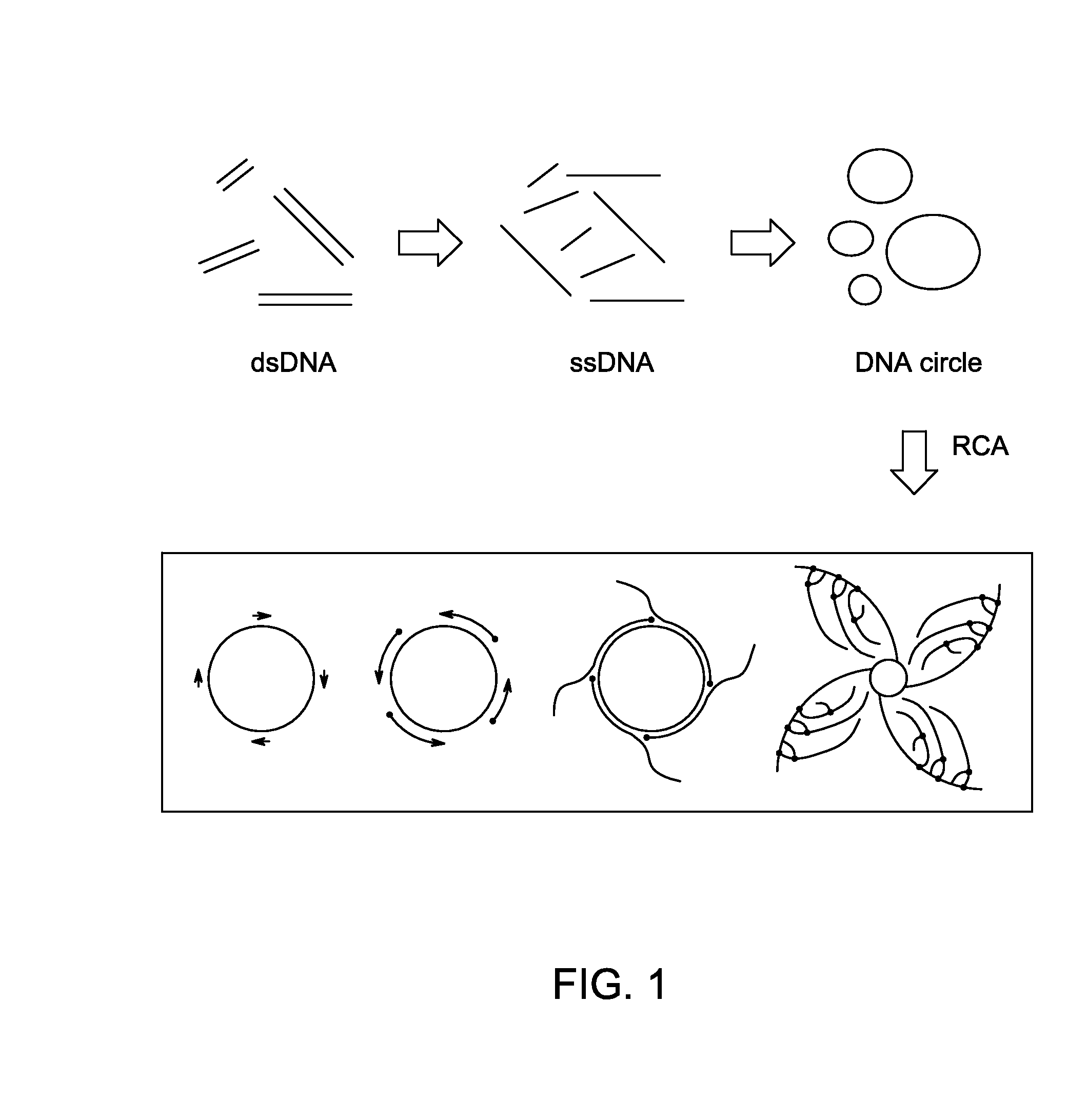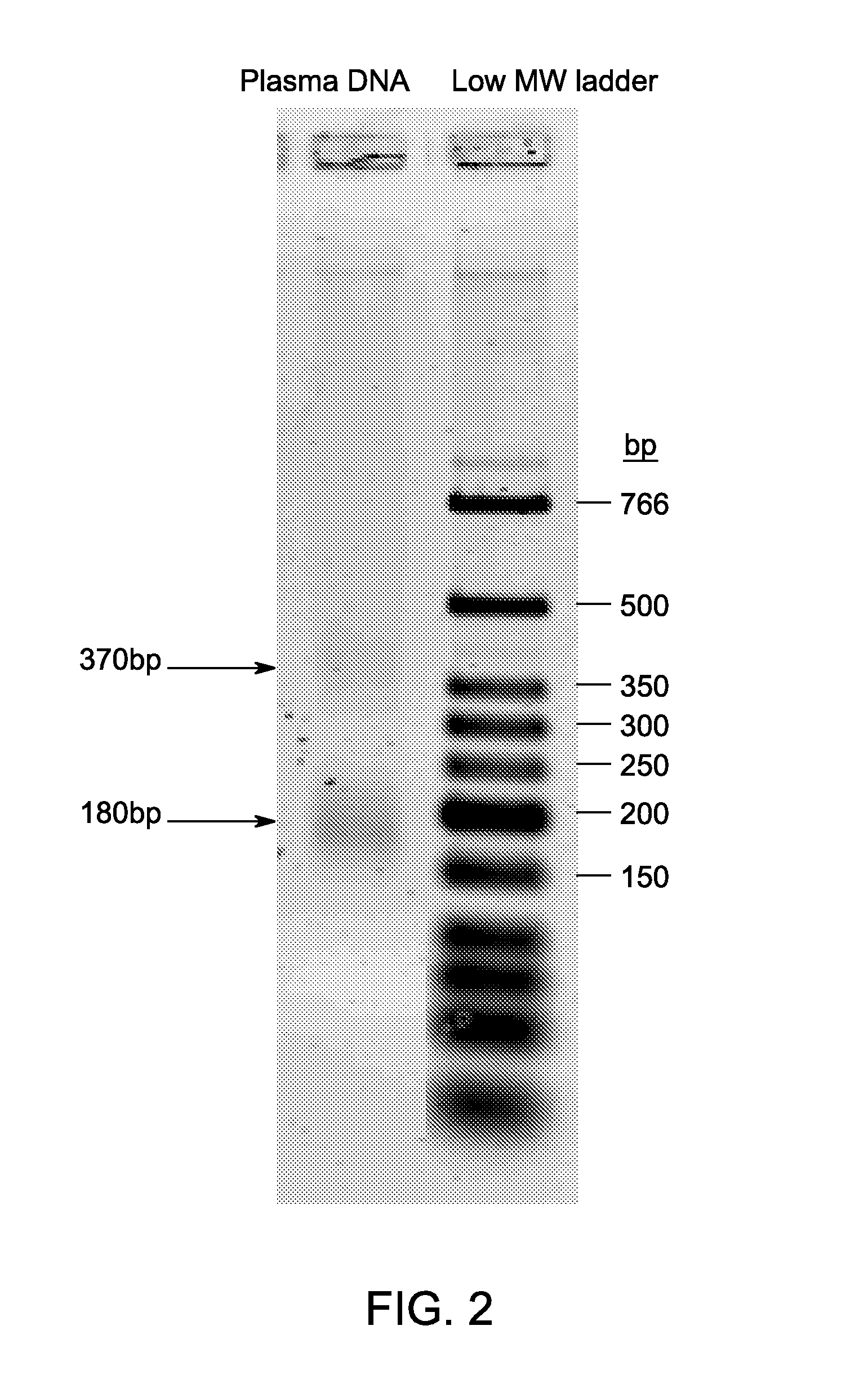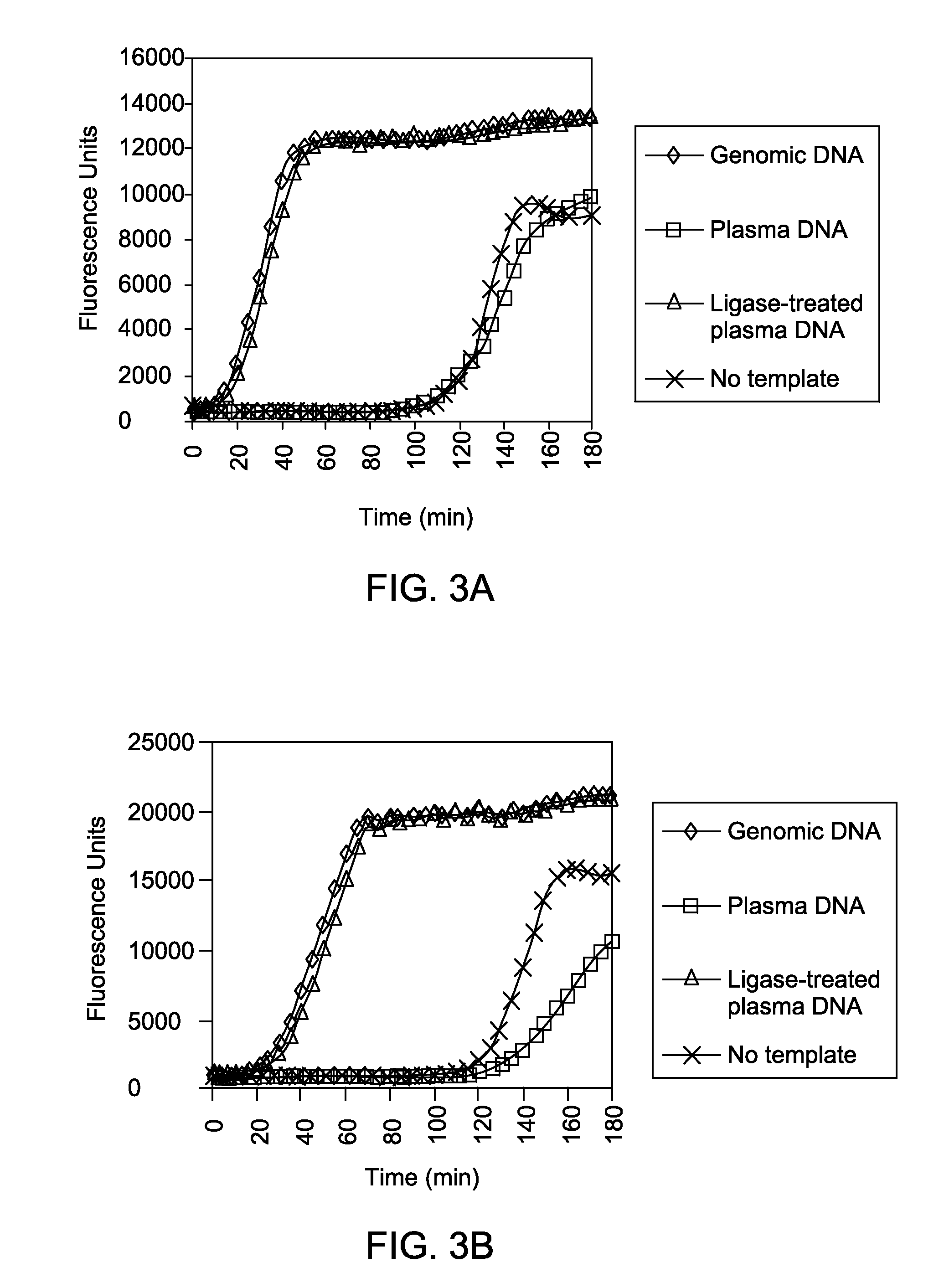Ligase-assisted nucleic acid circularization and amplification
a nucleic acid and ligase technology, applied in the field of nucleic acid assays, can solve the problems of significant sequence dropout, poor performance of these systems, and reduced amplification speed
- Summary
- Abstract
- Description
- Claims
- Application Information
AI Technical Summary
Benefits of technology
Problems solved by technology
Method used
Image
Examples
example 1
Whole-Genome Amplification of Circulating Nucleic Acid from Blood Plasma
[0058]Circulating DNA was isolated from citrate-phosphate-dextrose (CPD)—stabilized blood plasma of apparently healthy individuals using the Wako DNA extractor SP kit (Wako Pure Chemical Industries). Approximately 1.3 ng was analyzed by electrophoresis through a 2% agarose gel using TBE buffer, stained with SYBR Gold and visualized using a Typhoon imager. As depicted in FIG. 2, the majority of the circulating DNA was approximately 180 bp in length, with an additional smaller amount of sequences that were approximately 370 bp long, and a substantially smaller amount of higher molecular weight sequences.
[0059]350 pg circulating DNA from plasma was heated at 95° C. to denature the template. The denatured, single-stranded DNA template was then treated with an RNA or DNA ligase to generated single-stranded DNA circles. ATP-dependent T4 DNA ligase, cell-encoded NAD-dependent E. coli DNA ligase or a thermostable RNA li...
example 2
Analysis of Amplified Circulating Nucleic Acids from Blood Plasma by Ligase-Assisted Whole-Genome Amplification
[0061]The amplified DNA generated in Example 1 was further analyzed by quantitative PCR using primers targeting four different CODIS loci (vWA, TPOX, D8S1129, and D13S317) to sample the effectiveness of the ligase-assisted whole-genome amplification method for promoting sensitive and balanced DNA amplification. These DNA levels were compared with the values from unamplified DNA to determine the relative representation levels after amplification. As illustrated in FIG. 4, in both examples, the amplification of untreated plasma DNA led to sequence dropout or produced DNA that was highly under-represented at the tested loci. In contrast, including either CircLigase II™ or T4 DNA ligase in the method prevented the sequence dropout of the four loci and produced DNA that was more similar in representation to the amplified high molecular weight genomic DNA. In the example using Ci...
example 3
Optimization of Reaction Conditions for Ligase-Assisted Whole-Genome Amplification
[0062]The ligase-assisted DNA amplification reaction was further optimized by optimizing the efficiency of ligation reaction of single stranded DNA molecule by TS2126 RNA ligase. The presence of metal ion was essential for the ligation reaction since eliminating manganese from the standard manufacturer recommended buffer reduced amplification rates to background levels. Untreated genomic DNA and untreated plasma DNA were compared with CircLigase II™-treated plasma DNA samples using modified buffer conditions (FIG. 6). All buffer conditions contained 33 mM KOAc, 0.5 mM DTT, and 1M betaine. Where indicated, buffers contained 33 mM Tris-acetate (pH 7.5) or 33 mM HEPES-KOH (pH 8.0) and additionally contained 2.5 mM MgCl2 or 2.5 mM MnC2. Real-time amplification was performed by adding a small amount of SYBR green I to the amplification mixture and monitoring fluorescence increase over time in a Tecan plate ...
PUM
| Property | Measurement | Unit |
|---|---|---|
| Molar density | aaaaa | aaaaa |
| Molar density | aaaaa | aaaaa |
| Molar density | aaaaa | aaaaa |
Abstract
Description
Claims
Application Information
 Login to View More
Login to View More - R&D
- Intellectual Property
- Life Sciences
- Materials
- Tech Scout
- Unparalleled Data Quality
- Higher Quality Content
- 60% Fewer Hallucinations
Browse by: Latest US Patents, China's latest patents, Technical Efficacy Thesaurus, Application Domain, Technology Topic, Popular Technical Reports.
© 2025 PatSnap. All rights reserved.Legal|Privacy policy|Modern Slavery Act Transparency Statement|Sitemap|About US| Contact US: help@patsnap.com



